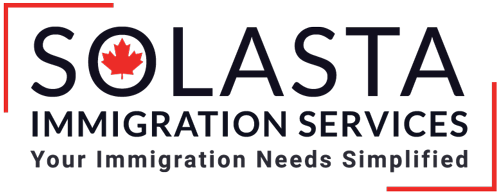
Work Permit Canada
work permit for canada, work permit canada, work permit in canada, work permit application canada, work permit application, how get work permit in canada, work permit canada requirements, work permit requirements canada
Work Permit
A Canadian work permit is a document that allows you to live, study, and work within Canada, when you are from a foreign country. In Canadian immigration terms, the definition of work is defined as jobs done for which wages are paid. It is usually a job which competes with Canadian labour market. Before hiring a foreign worker, a Labour Market Impact Assessment (LMIA) is required, proving that the projected employment will not negatively influence Canadian workers. A job offer from a Canadian employer is a must to apply for a Canadian Work Permit. In some circumstances, Canadian immigration regulations allow for Open Work Permits, which are not bound to one employer. A work permit is always temporary in nature, but can be extended from inside Canada. It is also seen as a possible way of becoming a permanent resident or Canadian citizen.
Post Graduate Work Permit
The Post-Graduation Work Permit Program (PGWPP) allows students who have graduated from eligible Canadian designated learning institutions (DLIs) to obtain an open work permit to gain valuable Canadian work experience. Skilled Canadian work experience in National Occupational Classification (NOC) skill type 0 or skill level A or B that is gained through the PGWPP helps graduates qualify for permanent residence in Canada through the Canadian experience class within Express Entry.
Students who have completed their program of study are allowed to work while they are waiting for a decision on their post-graduation work permit application, provided they meet all of the following criteria:
- they are or were holders of a valid study permit at the time of the post-graduation work permit application
- they were a full-time student enrolled at a DLI in a post-secondary academic, vocational or professional training program
- they were authorized to work off-campus without a work permit
- they did not exceed the allowable hours of work
The PGWP is another pathway to potentially become a permanent resident and eventually a full Canadian citizen.
NAFTA Work Permit
North American Free Trade Agreement (NAFTA) work permits are for citizens coming from America and Mexico, who work temporarily in Canada.
International Mobility Program: North American Free Trade Agreement (NAFTA)
The NAFTA seeks to liberalize trade between the U.S., Mexico and Canada and abolish tariffs and other trade barriers. The Agreement opens up the three countries’ markets by ensuring that future laws will not create barriers to doing business.
In order for trade to expand, individuals must have access to each other’s country to sell, provide goods or services or trade and invest. NAFTA eases the temporary entry of citizens of the U.S., Mexico and Canada, whose activities are related to the trade of goods or services, or to investment. The NAFTA is a reciprocal agreement and Canadians will be afforded similar treatment when seeking entry to the U.S. or Mexico. An American or Mexican business person seeking entry to Canada is eligible for consideration under the provisions of the NAFTA, as well as the general provisions which apply to all foreign workers.
What NAFTA does
- NAFTA facilitates temporary entry for business persons who are citizens of the U.S., Mexico and Canada and who are involved in the trade of goods or services, or in investment activities.
- NAFTA removes the need for a Labour Market Impact Assessment (LMIA) for all business persons covered by the Agreement.
- In the case of a business visitor, it removes the need for a work permit.
- For professionals and intra-company transferees, it expedites the application process because one can apply at the port of entry (POE), (note that nationals who require a temporary resident visa to enter Canada, however, should apply at a visa office prior to coming to Canada).
What NAFTA does not do
- NAFTA does not assist permanent admission.
- It does not apply to permanent residents of the three countries.
- It does not replace the general provisions dealing with foreign workers.
- It has no effect on universal requirements related to passports and identity documentation, medical examinations and safety and security.
- It does not replace the need for workers to meet licensing or certification requirements respecting the exercise of a profession.
- It does not extend special privileges to spouses and members of the family. Their entry is governed by the provisions of the Immigration and Refugee Protection Act and the Regulations.
Employer-specific work permits
You need to apply to extend or change the conditions of your work permit if:
- your job is extended
- there are changes to your current job, such as:
- a change in your pay
- new responsibilities
- you’re offered a different job
- you want to work for a new employer
You can’t start working at a different job or for a new employer until you get your work permit with the new conditions. If you forget to extend/renew your work permit before it expires, restoring your work permit would be the only option. In such case, you should not work unless you receive your revised work permit. Keep in mind that it is not guaranteed that your work permit will be restored.
LMIA Based Work Permits
In order to hire a temporary foreign worker, for almost all Canadian work permits a Labour Market Impact Assessment (LMIA) is required. Typically, it is a 2 step process to receive a Canadian Work Permit which involves the foreign workers and employers. First step is taken by the applicant and it is done by submitting an application to ESDC for a Labor Market Impact Assessment. Second step is taken by sending application to Citizenship and Immigration Canada (CIC) for the actual work permit. After considering several protective labour market factors, the ESDC gives an authorization to the Canadian employer for hiring a foreign worker.
Work Permit Extension
If your current work permit is expiring you will need to apply for an extension of your current work permit, which should be done within 30 days. You can’t extend your work permit beyond the expiry date of your passport.
You must have applied for PR, have your present work permit expiring in next 4 months or less, have a valid status on your work permit and currently be in Canada to apply for a bridging open work permit.
Bridging Open Work Permit
The Bridging Open Work Permit (BOWP) as the name suffices is a method to allow a foreign national in Canada to persist working while their application for PR is in process.
For applicants who applied for PR application under one of the following economic immigration programs are the ones who are considered for a BOWP. The conditions are that they hold a valid work permit or have maintained a status and authorization to work after submitting an application to renew their work permit. Or they are eligible to restore their temporary resident status with authorization to work on a work permit.

